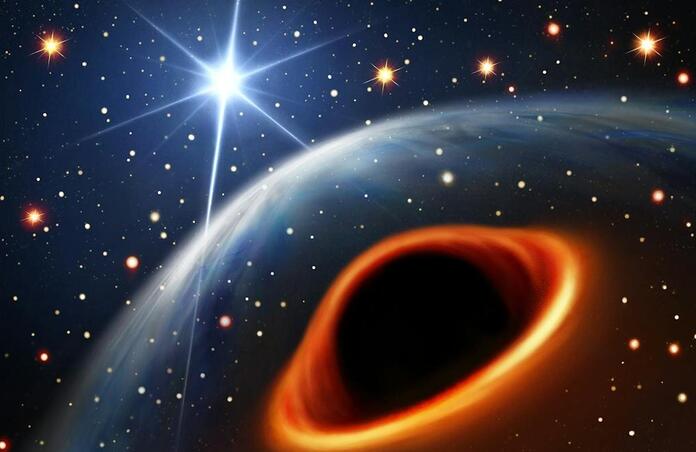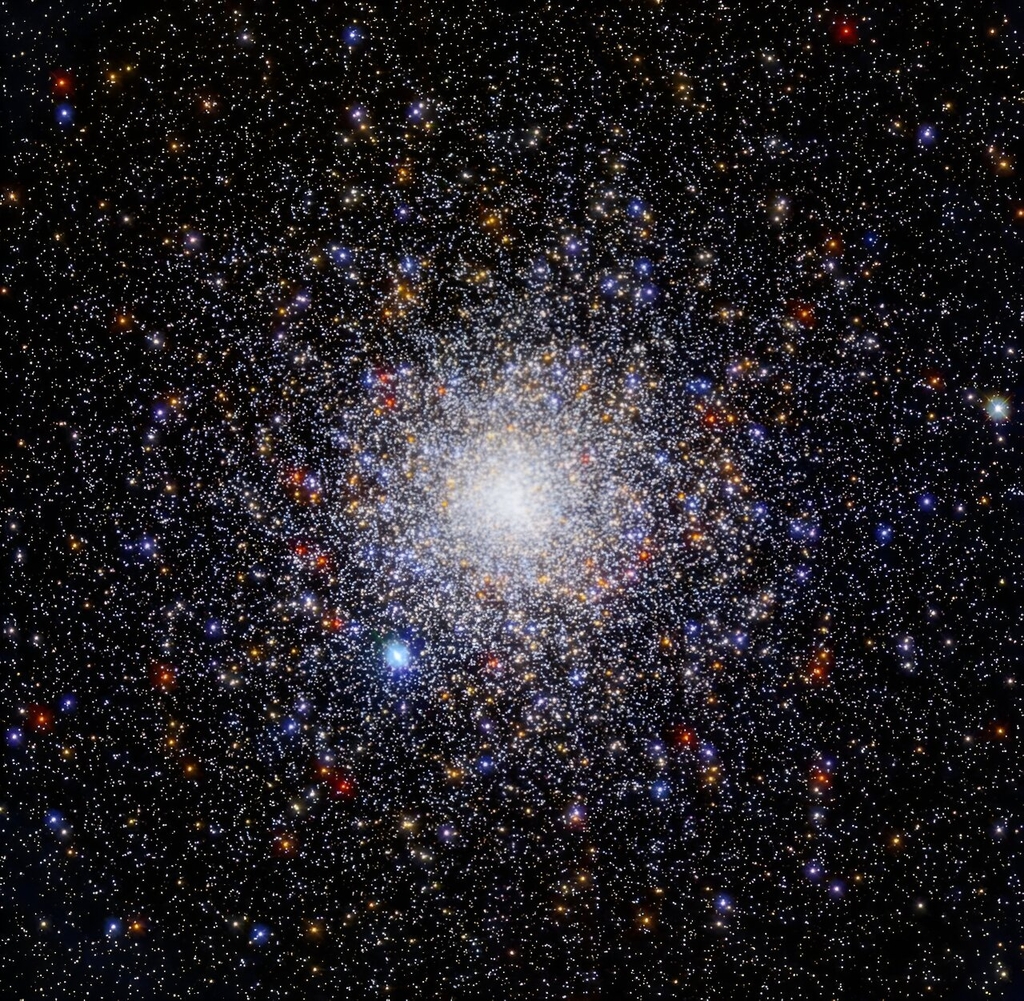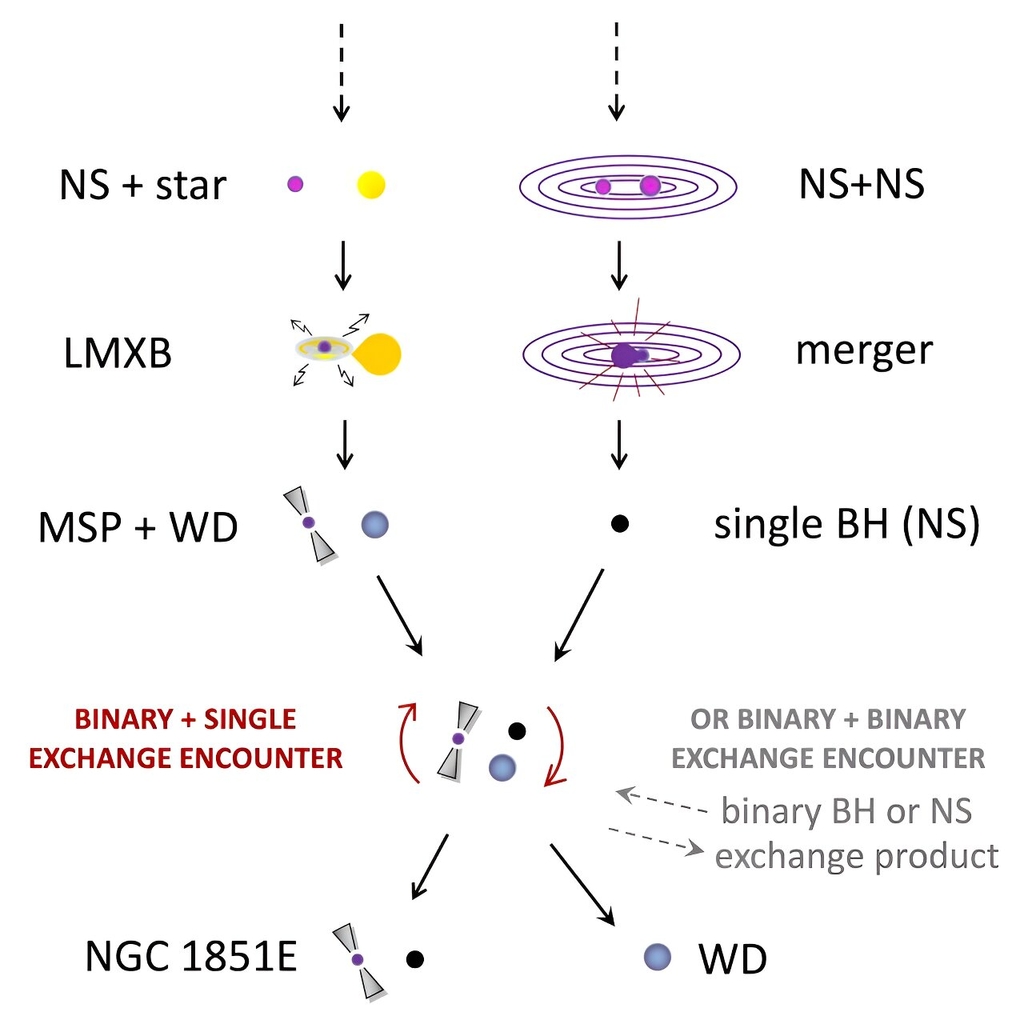Team uncovers mysterious object- heaviest neutron star or lightest black hole?

An international team of astronomers have discovered a mysterious object around 40,000 light years away. The nature of the object is yet to be determined, since it is more massive than the heaviest neutron star, but lighter than the lightest black hole.
Neutron stars are some of the densest objects in the cosmos. Such objects are the collapsed cores of massive stars once they have reached the end stages of their lifetime. Stars even more massive than this will collapse further, forming an even denser object known as a black hole. Black holes have such vast densities and strong gravitational pull that nothing which enters it can escape, including light. The physics of objects between these stages are not well understood, and to improve on our insight, such objects in this ‘gap’ must be found. More specifically, objects for which precise measurements can be carried out over long periods of time. This is exactly what a team of astronomers have found, the discovery reported in the journal Science.

The team were looking at the star cluster NGC 1851 where they observed a system comprising a millisecond pulsar known as PSR J0514-4002E and a massive hidden counterpart. Pulsars are a type of neutron star which emit beams of radio waves as they rapidly rotate. The mysterious companion is invisible at all frequencies of light, which in other cases would make it impossible to study, however, information can be revealed thanks to the help of the pulsar. The pulsar spins at a rapid rate of over 170 times a second, and with each rotation a radio pulse is emitted. Such objects can be used as cosmic atomic clocks, since their spins are very stable allowing for their precise measurement through the regular radio pulse emitted.
However, although pulsars are intrinsically stable, the spin can change when the pulsar is in motion or when the signal is affected by a strong gravitational field. These changes provide astronomers with the opportunity of studying the properties of objects in orbit with pulsars. Ewan Barr from Max Planck Institute for Radio Astronomy, who led the study with his colleague Arunima Dutta, explained: "Think of it like being able to drop an almost perfect stopwatch into orbit around a star almost 40,000 light years away and then being able to time those orbits with microsecond precision."
The MeerKAT radio telescope, situated in South Africa was used to make observations of the intriguing system, dubbed NGC 1851E. It was discovered that the system has a separation of 8 million km, around 0.05x the distance between Earth and the sun, in addition to orbiting each other once every 7 Earth days. The detailed orbits of the two objects were followed, uncovering that their point of closest approach changes with time. These changes are explained by Einstein’s theory of relativity, and the speed of the changes provide information about the combined mass of the system.

The observations revealed that NGC 1851E has a combined mass 4x that of the sun and the dark companion is a compact object, much denser than a normal star. Considering that the most massive neutron stars weight around 2 solar masses, if this system comprised two neutron stars, they would be two of the heaviest neutron stars found yet. However, to determine the nature of the hidden partner, the mass distribution is needed.
The system was modelled using Einstein’s general relativity, finding a companion mass between 2.09 and 2.72 solar masses. This falls within the black hole mass gap: the region between the heaviest neutron star and lightest black hole which spans 2.2-5 solar masses. There is still majority which is unknown about this area, and the nature and formation of objects in this gap is an ongoing question in astrophysics. "Either possibility for the nature of the companion is exciting," team leader and University of Manchester professor of astrophysics Ben Stappers said in a statement. "A pulsar–black hole system will be an important target for testing theories of gravity, and a heavy neutron star will provide new insights into nuclear physics at very high densities."
The team have theorised that the pulsar is in orbit around the remains of a neutron star merger, whereby two neutron stars have collided. This seemingly unusual configuration is possible since stars within this cluster are densely packed, so there are many chances for interactions. A black hole is born from the event, which can be much lighter than one which forms from a collapsing star. This black hole may have found another pair of stars in the cluster and kicked out the lighter companion, giving rise to the system currently observed. The team are working on further studies to conclusively identify the true nature of the companion: is this object the lightest black hole, the heaviest neutron star or something else entirely?
--
Cover image: MPIfR; Daniëlle Futselaar (artsource.nl)
Journal source: Ewan D. Barr, Arunima Dutta, Paulo C. C. Freire, Mario Cadelano, Tasha Gautam, Michael Kramer, Cristina Pallanca, Scott M. Ransom, Alessandro Ridolfi, Benjamin W. Stappers, Thomas M. Tauris, Vivek Venkatraman Krishnan, Norbert Wex, Matthew Bailes, Jan Behrend, Sarah Buchner, Marta Burgay, Weiwei Chen, David J. Champion, C.-H. Rosie Chen, Alessandro Corongiu, Marisa Geyer, Y. P. Men, Prajwal Voraganti Padmanabh, Andrea Possenti. A pulsar in a binary with a compact object in the mass gap between neutron stars and black holes. Science, 2024; 383 (6680): 275 DOI: 10.1126/science.adg3005
